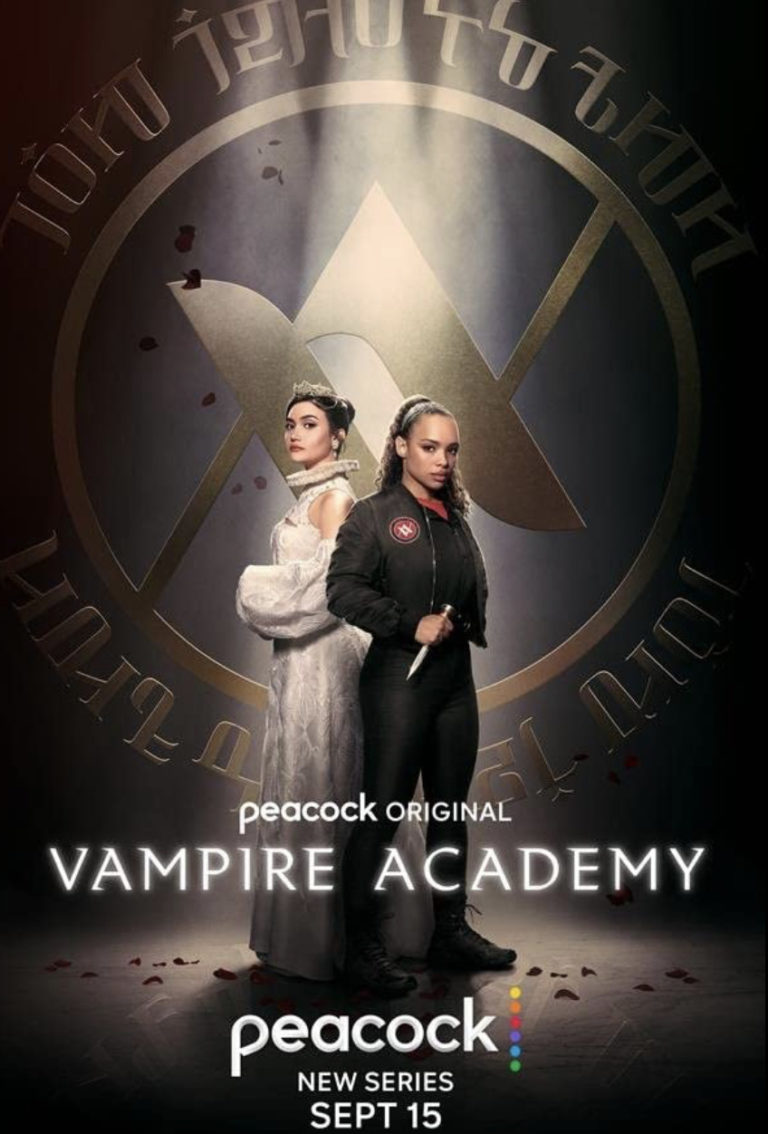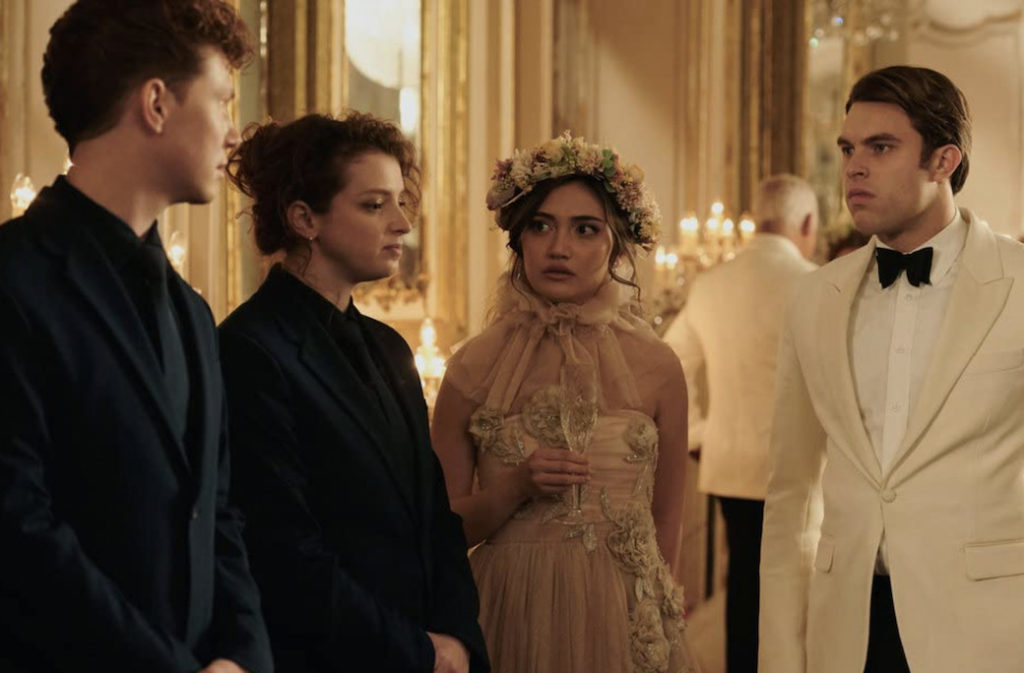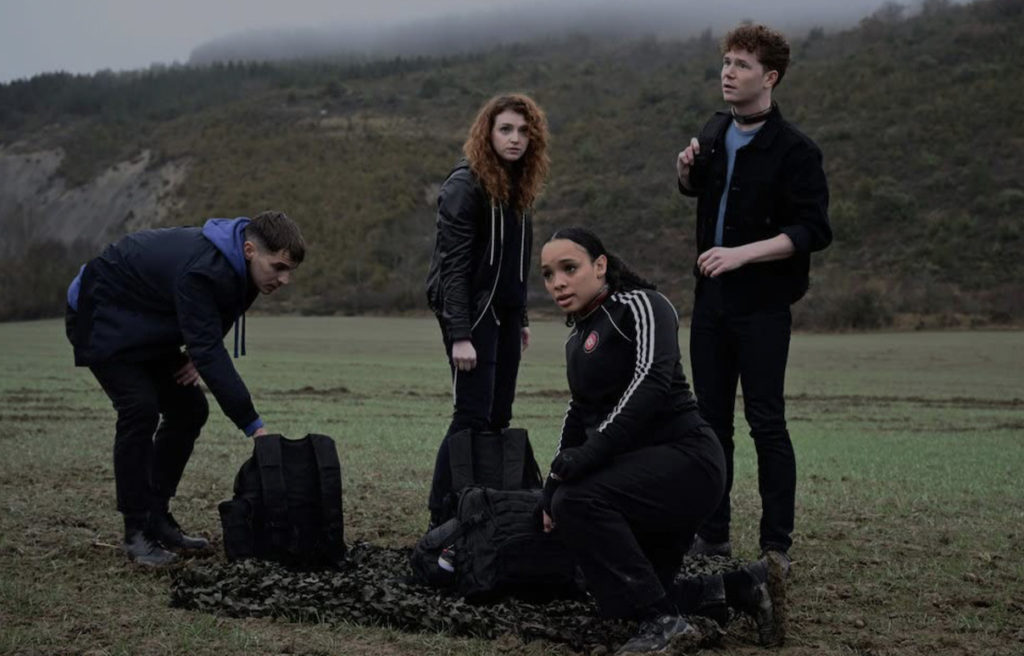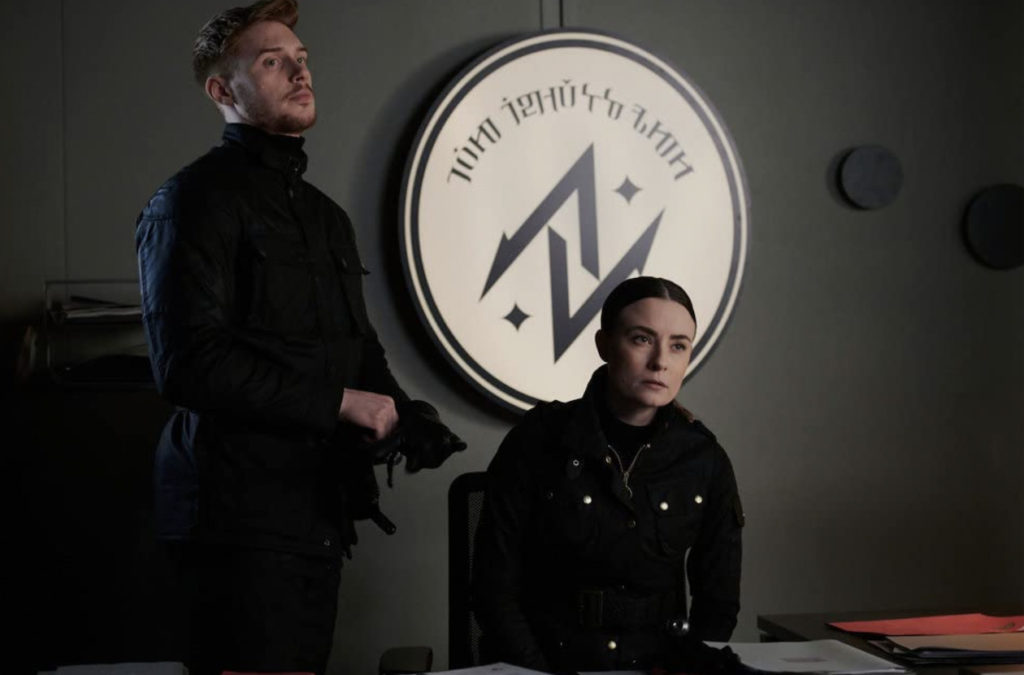
Finding a sense of belonging and subsequently fighting for that life they want to lead is a vital rite of passage for adolescents in any society. The teen protagonists of the new fantasy horror television show, Vampire Academy, are no exception; they’re struggling to determine and accept their true personalities at their titular school, despite being supernatural beings and not having complete control over their humanity at all times.
The drama series, which is based on the late 2000s YA novel series of the same name by Richelle Mead, was co-created by showrunners Julie Plec and Marguerite MacIntyre. The duo also served as writers, executive producers and directors on the series’ 10-episode first season. The duo reunited for Vampire Academy, after they previously worked together on fellow vampire YA television shows, The Vampire Diaries, The Originals and Legacies.
Vampire Academy, which is set in a world of privilege and glamour, follows the friendship of two young women, Rosemarie “Rose” Hathaway (Sisi Stringer) and Vasilisa “Lissa” Dragomir (Daniela Nieves). The duo are transcending their strikingly different classes as they prepare to complete their education and enter vampire society.
Rose is a dhampir, a half-vampire/half-human guardian-in-training who’s learning how to protect Lissa, a royal Moroi vampire, against the savage Strigoi vampire breed that threaten to tear the girls’ society apart. That is, if royal infighting doesn’t destroy Moroi society first.
Plec generously took the time this weekend to talk about co-creating and serving as one of the showrunners on Vampire Academy‘s first season during a roundtable interview at New York Comic Con. The season’s first seven episodes are now available to stream on Peacock. Its remaining three episodes will premiere every Thursday until October 27.

Q: How many seasons of the show would you like to see in total?
JP: At this point, I think when you’re working in streaming, you’re desperately hoping for three [seasons], but this [show] can go for four or five [seasons], plus there’s a spin-off in it, too. There are all kinds of opportunities to expand this world.
Q: Speaking of spin-offs, you introduce the alchemists [humans assigned to help Moroi and dhampirs keep their existence discreet] pretty early on in the season. What went into developing their new, sleeker tattoo design? Does this mean we meet Sydney this season?
JP: We’re not going to meet Sydney this season, but I certainly plan on introducing her eventually. We do meet Adrian, however.
In terms of the alchemist face tattoo, I couldn’t quite visualize the golden lilies [that are described in the book series] as a design that would hold up [on the show]. But we might revisit it as we move forward because it’s not like I love the one that we did.
We’re definitely teasing the alchemists this season as something that’s going to be more important next season. So we have some room to figure it out.
Q: This first season takes a much more adult approach than expected, since a lot of the [books’] fanbase is teenagers. So what went into that choice to make the show very adult?
JP: I think the first thing we looked at was the fanbase that loves the books, which were released 15 years ago. So they might actually be my age by this point.
One thing I learned from The Vampire Diaries is that everyone thinks that just teenagers are watching YA shows, but it’s actually rarely the teenagers who are watching them; it’s usually their mothers who are watching them. Then the teenagers get sucked into watching them.
Or in the case of The Vampire Diaries, the teenagers found it, generation after generation, on Netflix. The 12-year-olds weren’t watching it when it was first on television.
But I like to make YA television geared at everybody, and see who sticks around.
Q: Is there anyone from The Vampire Diaries universe that you want to come onto Vampire Academy? Do you have any characters in mind?
JP: No. Marguerite really believes, and I agree with her, that we should keep the two universes very separate, so there’s no confusion.
At some point, when enough years have gone by, there might be an opportunity for one of the [Vampire Diaries] actors to come play a different character [on Vampire Academy], but there wouldn’t be any character cross-overs. I say that now, but who knows? [Plec laughs.]

Q: Speaking about the actors, how did you approach casting the main characters for Vampire Academy?
JP: Casting was very intense because it was over Zoom. It was when we both [MacIntyre and Plec] were trying to break the story for the pilot, write the script and prep a show that was about to shoot in Europe. [The series was filmed in Spain and Portugal.]
So we had to write fake casting material because we hadn’t written the script yet. So we were trying to ask, “Does this voice feel right for this character or not?”
We then watched a ton of [audition] tapes. But when all was said and done, we read Sisi really late, so I think there was a fear that we hadn’t found our Rose yet. But we found Daniela really early, and it was a no-brainer that she was our Lissa.
But then we started mixing and matching people. We had Daniela read for Rose, and Sisi read for Lissa. We also had Rhian Blundell, who plays Meredith, read every part. [Plec laughs.] So when we finally landed on everybody, we felt really proud of ourselves that we got it right.
Q: The Vampire Academy movie [that was theatrically released in 2014 and is the first screen adaptation of Mead’s book series] didn’t do so well at the box office. Was there anything that you wanted to avoid [doing on the show] that the movie did, or was there anything that you wanted to keep true to the movie [on the show]?
JP: Well, all I know about the movie is that it was marketed almost like a Mean Girls-esque comedy. [The Vampire Academy movie was directed by Mark Waters, who also helmed Mean Girls.] I really resisted and resented that, so I never saw the [Vampire Academy] movie because of that reason. So the movie itself could have been fantastic and I missed out.
I just knew that the only way to approach, and be respectful, to this source material would be to take it very seriously and be very grounded. The feelings and personalities needed to be grounded in reality. So every character needed to be treated with integrity.
Q: A lot of this first season is focused on backstory, so how much of book one and two will featured on the show by the end of this first season?
JP: You’ll surprisingly see a lot of book one, but minus the bulk of it, which is the teen party and lust charm. So you’ll see the bones of book one, but also half the bones of book six.
So we’re moving a lot of pieces around in different ways, and that’s been a lot of fun. Hopefully that will be fun for the fans, as well, because they don’t quite know what to expect.
If you love a book series, it’s fun to see it play out [on screen] as you remember it in your head, but it’s also fun to see where we ended up seeing things. At any moment, you can be surprised by a little detail that you thought we had forgotten.

Q: How did you approach working with the cast on creating the action sequences and stunts for their characters?
JP: That was great. We had a stunt team on set all the time. Usually, you’re not full-time on stunts; you get brought in a couple days prior to a big stunt and you rehearse it, and then go away.
But we had a team that was always working, as we were always choreographing the next big sequences. So the actors would go every day they weren’t filming for stunt training, even if they weren’t training for a particular sequences.
They’d instead be doing conditioning and strength training, and were learning moves, almost like they were learning choreography. That way, the stunt coordinator could say, “It’s this move and that move,” so that they’d already know what the moves were.
So the actors got super fit, which was great because they were super happy and had great energy, which was nice to see.
Q: It was also interesting to see on the show how a Moroi can’t always stop themselves, and then turn into Strigoi.
JP: I agree; that was an interesting part to the story. When I read the books, I thought Richelle Mead had made up all of that. I then realized that Strigoi was from Romanian folklore.
When I write vampires, I write moody, broody, romantic ones who might go dark for a little while, but are always fighting to get their humanity back. What I like about this [franchise] is that you can have these romantic representations of vampires in the <oroi, and the vicious, primal, feral, relentless monster representation in the Strigoi.
I haven’t been able to do that very much, and have always struggled with the question of if my vampires are too likeable. I like that we’re in a monster show here, and they’re not going to turn good or be nice.
They also seem to be organizing in a way that they didn’t used to do, so you’re seeing the evolution of a series in real time, which is cool.
Check out more of Karen’s articles.
Here’s the trailer of the series.

